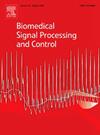A prior embedding-driven architecture for long distance blind iris recognition
IF 4.9
2区 医学
Q1 ENGINEERING, BIOMEDICAL
引用次数: 0
Abstract
Blind iris images, caused by unknown degradation during the process of iris recognition at long distances, often lead to decreased iris recognition rates. Currently, limited literature addresses this issue. To tackle this challenge, we propose a prior embedding-driven architecture for long-distance blind iris recognition. Our approach introduces a blind iris image restoration network named Iris-PPRGAN. To effectively restore the texture of blind iris images, Iris-PPRGAN incorporates a Generative Adversarial Network (GAN) as a Prior Decoder and a Deep Neural Network (DNN) as the encoder. To enhance iris feature extraction, we also developed a robust iris classifier by modifying the bottleneck module of InsightFace, referred to as Insight-Iris. Initially, a low-quality blind iris image is restored using Iris-PPRGAN, and the restored image is subsequently recognized through Insight-Iris. Experimental results on the public CASIA-Iris-distance dataset demonstrate that our method outperforms state-of-the-art blind iris restoration techniques. Specifically, the recognition rate for long-distance blind iris images improves from 80.77 % (without restoration) to 90.38 % after applying our method, reflecting an approximate ten-percentage-point improvement. These results, validated both quantitatively and qualitatively, underscore the effectiveness of our approach in addressing the challenges of long-distance blind iris recognition.
远距离盲虹膜识别的先验嵌入驱动结构
在远距离虹膜识别过程中,由于未知的退化而导致的虹膜图像盲点往往会导致虹膜识别率下降。目前,解决这个问题的文献有限。为了解决这一挑战,我们提出了一种基于先验嵌入驱动的远距离盲虹膜识别架构。我们的方法引入了一种盲虹膜图像恢复网络iris - pprgan。为了有效地恢复盲虹膜图像的纹理,iris - pprgan结合了生成对抗网络(GAN)作为先验解码器和深度神经网络(DNN)作为编码器。为了增强虹膜特征提取,我们还通过修改InsightFace的瓶颈模块开发了一个鲁棒的虹膜分类器,称为Insight-Iris。首先,使用iris - pprgan恢复低质量的盲虹膜图像,随后使用Insight-Iris识别恢复后的图像。在casia -虹膜距离公共数据集上的实验结果表明,我们的方法优于目前最先进的盲虹膜恢复技术。具体来说,应用我们的方法后,远距离盲虹膜图像的识别率从80.77%(未恢复)提高到90.38%,大约提高了10个百分点。这些结果在定量和定性上都得到了验证,强调了我们的方法在解决远距离盲虹膜识别挑战方面的有效性。
本文章由计算机程序翻译,如有差异,请以英文原文为准。
求助全文
约1分钟内获得全文
求助全文
来源期刊

Biomedical Signal Processing and Control
工程技术-工程:生物医学
CiteScore
9.80
自引率
13.70%
发文量
822
审稿时长
4 months
期刊介绍:
Biomedical Signal Processing and Control aims to provide a cross-disciplinary international forum for the interchange of information on research in the measurement and analysis of signals and images in clinical medicine and the biological sciences. Emphasis is placed on contributions dealing with the practical, applications-led research on the use of methods and devices in clinical diagnosis, patient monitoring and management.
Biomedical Signal Processing and Control reflects the main areas in which these methods are being used and developed at the interface of both engineering and clinical science. The scope of the journal is defined to include relevant review papers, technical notes, short communications and letters. Tutorial papers and special issues will also be published.
 求助内容:
求助内容: 应助结果提醒方式:
应助结果提醒方式:


